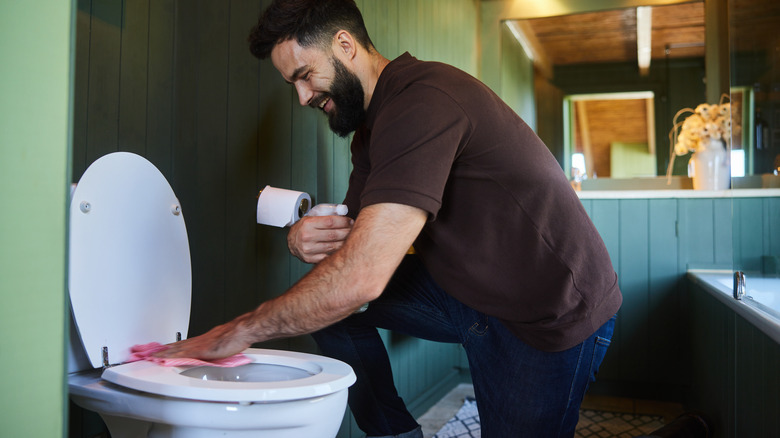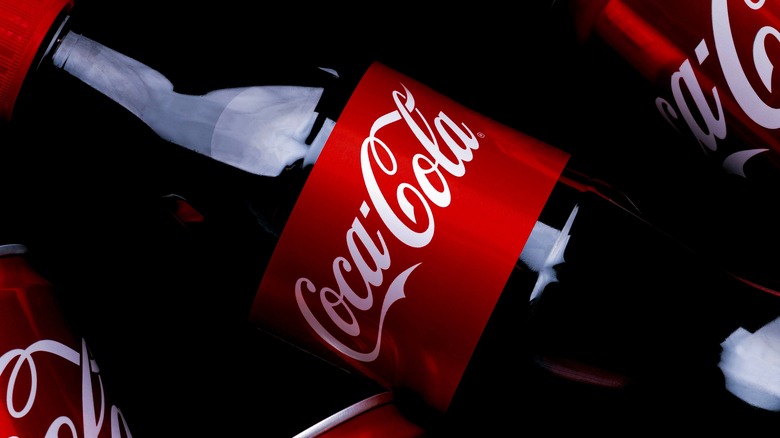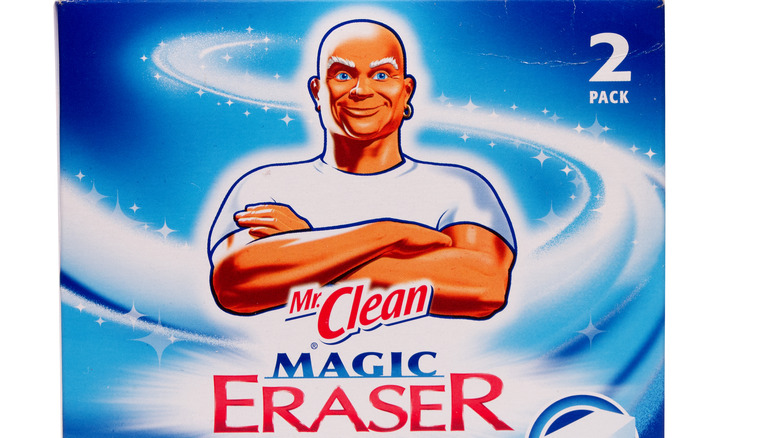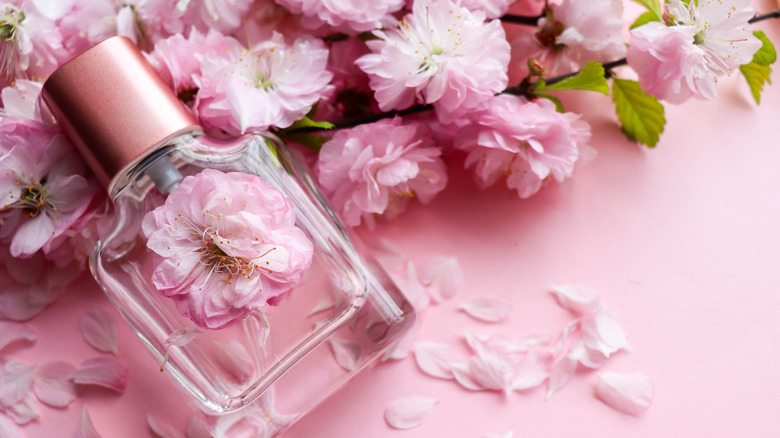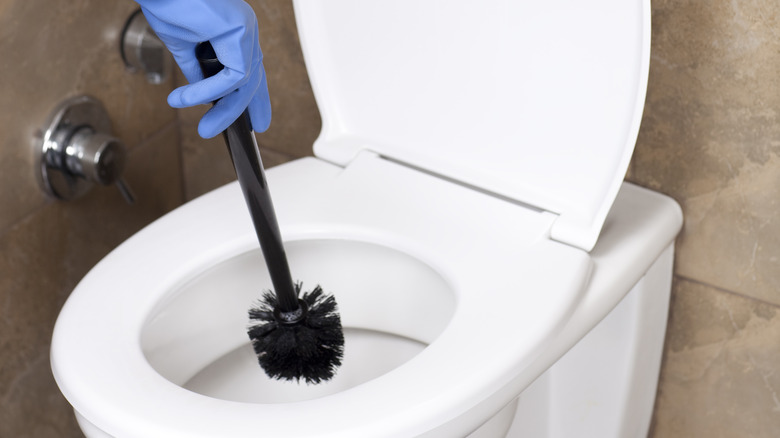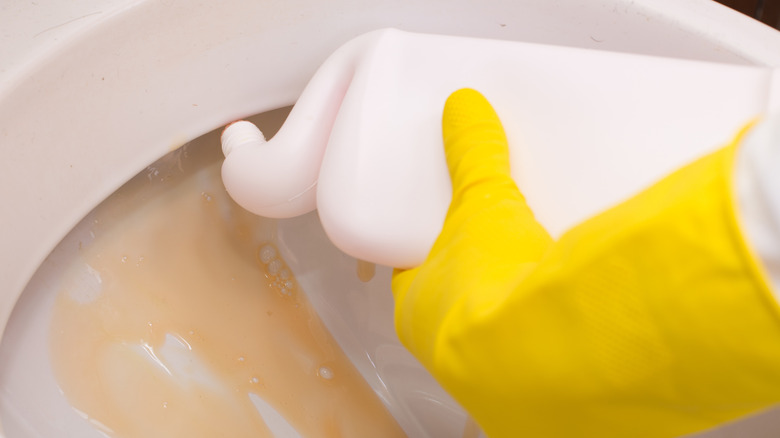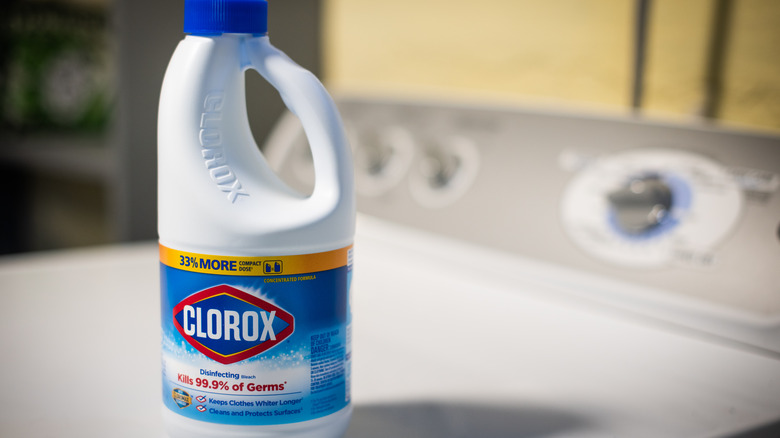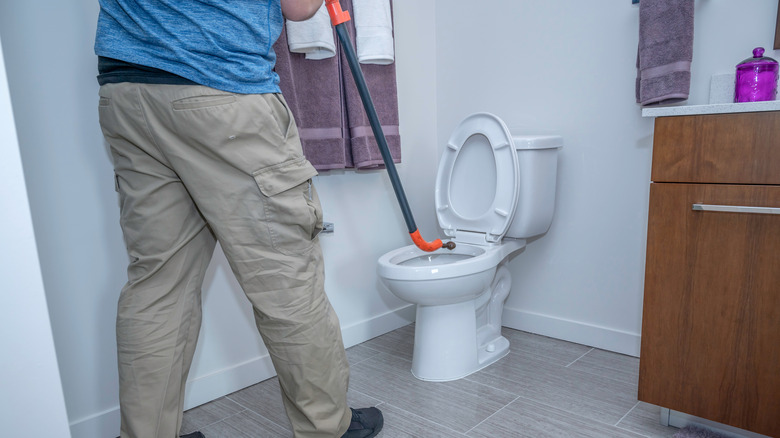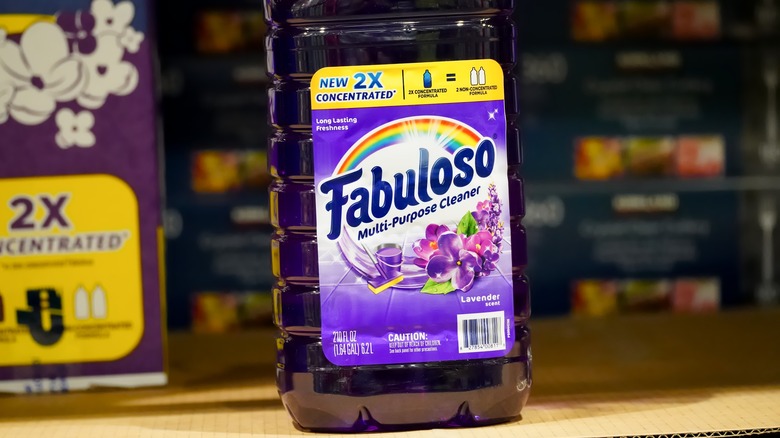It's Time To Stop Believing These Common Toilet Cleaning Myths
We may receive a commission on purchases made from links.
There is one hard and fast rule when cleaning the toilet: if you're jamming to your favorite tunes while you clean, never get so caught up in the moment that you use the toilet brush as a microphone. Every other toilet cleaning hack you hear is a gamble. It could be true, but is it?
Some cleaning tips and tricks work great and do make the unpleasant task of toilet cleaning easier. But untruths about toilet cleaning abound. Some of these myths are harmless—they won't help you but they won't hurt anything either. But others may actually damage your toilet or your plumbing. The popular tricks of dropping a Magic Eraser into your toilet tank, for instance, could damage parts and cause a water leak.
Fortunately, we've done the research so you don't have to. We'll help you wade through the facts and fictions of cleaning your toilet so you can get the job done as easily and safely as possible.
You can clean your toilet with soda
There is a lengthy list of miracles Coca-Cola can supposedly perform, and cleaning your toilet is rumored to be one of them. Coke is part of the one toilet cleaning trick you need to know, but its use is often misunderstood. People buy into this one because the acid in soda can clean a lot of surprising things. Others believe the carbonation bubbles dirt away. Coke can help with your toilet—but not in the way most people think. Never follow advice that tells you to simply dump a bottle of soda in your toilet. If you do, you're going to have a sticky mess on your hands. And the sugar in that sticky mess will attract bacteria rather than remove it.
It is actually the acid in the soda that works, not the carbonation. The trick to getting this hack right is to spray the soda into the toilet. Using a spray bottle helps you target stains that you won't reach if you just pour the soda in. It's also important to remember that the toilet still needs a thorough cleaning when you're done tackling the stains. There are two reasons for this: one, you don't want to leave a sugary sticky mess in your toilet and two, soda has no antibacterial properties. It may lift a hard water stain, but your toilet will still be filled with germs and bacteria after a soda "clean."
A Magic Eraser in the tank really is magical
This myth espouses that if you drop a Mr. Clean Magic Eraser in your toilet tank, your commode will stay cleaner. The problem is that Magic Erasers don't contain any cleansers, so there aren't any cleaning chemicals sent down into the bowl when you flush the toilet. In order to clean, these erasers require mechanical scrubbing action. It is the composition of the product that enables it to clean rather than any cleaning chemicals contained therein. Even worse, plumbers report that the dissolving foam-like material could damage components inside your toilet tank.
That doesn't mean you should toss your Magic Erasers out of your toilet cleaning kit completely. They do a fantastic job of cleaning up spots and stains on the outside of or around the toilet—the hinges and the bolts that secure the toilet to the floor can both get pretty grimy. If you don a pair of rubber gloves you may even be able to use them to scrub away tough grime inside the toilet bowl. Just make sure you follow up with a disinfectant so that the bowl is truly as clean as it is free of stains.
If it smells clean, it is clean
This is the one cleaning myth you need to stop falling for. If a toilet looks and smells clean, most people assume that it is. But this assumption fails to consider the fact that you can't see bacteria with the naked eye. If you dump a strong-smelling cleaner like Pine-Sol into the toilet bowl, it may smell super fresh. But these cleansers can't clean your toilet by themselves—they're ineffective if they just sit on a surface without any scrubbing action. A similar myth reasons that if you pour a little of these pleasant-smelling detergents into your toilet tank your toilet will be a little fresher with every flush. This does help maintain a pleasant odor, but it doesn't clean the toilet bowl and it can corrode the toilet tank and damage parts. It can also accidentally poison pets who may drink from the toilet bowl.
It's okay to use these sweet-smelling products when you clean your toilet, but you'll still have to do some scrubbing to get the maximum benefit. You don't, however, need to use antibacterial products. A good cleansing routine will remove most bacteria. Remember that germs and bacteria aren't the same thing (there are good types of bacteria), and it's germs you're really after. Soap and water are just as good at killing germs as more potent cleansers. Note too that those with septic systems should avoid overusing antibacterial cleansers as they can kill the beneficial bacteria in your septic tank that you need to break down waste.
All toilet brushes are the same
It turns out toilet brushes are not all created equal. According to professional cleaning services, some cleaning brushes spread cleaning chemicals well but don't scrub enough. Those with stiff bristles tend to scrub well but are often poorly made with short, cheap handles prone to bending and breaking under pressure. DIsposable toilet cleaning wands work great but create a lot of waste and so aren't good for the environment.
It seems that the best toilet cleaning brush is a bristle-style, but it must be a quality brush with a long, sturdy handle. Ideally, the brush should be stored in an enclosed container that provides adequate ventilation so the brush dries thoroughly between uses. Some high-end bristle brushes even offer replaceable heads so you can use the brush for a long time and then reduce the amount of waste you produce when it's time to throw it away.
You need a high-powered cleaner
A tough cleanser can help you feel like you've done a good job cleaning your toilet, but harsh cleaning agents are often overkill. You may need the extra power if you're dealing with a hard water stain or the dreaded toilet ring. But most cleansers are overly harsh, which can damage your toilet and plumbing over time. These chemicals can also cause problems when they find their way through the sewer system and out into natural waterways. As previously mentioned, overly potent chemicals can also wreak havoc on septic systems. Unfortnately, we're so used to cleaning this way that we often overlook the dangers of using toilet bowl cleaners.
For everyday cleaning, a solution of vinegar and water is usually enough to clean your toilet well. Hydrogen peroxide mixed with baking soda will also do the trick. To get the most from these homemade and other mild cleaning options, begin by turning the water valve off, or keeping the float inside the toilet tank up, and hitting the flush handle a few times to lower the water level in the bowl. Getting rid of the water in the bowl is the crucial step everyone forgets when cleaning the toilet. You don't want a full flush but a few short bursts of the handle. Then spray or otherwise apply your chosen cleaning solution and let it sit for a few minutes before scrubbing the toilet with your cleaning brush. Flush your cleaning solution away to rinse.
Bleach can solve your stain problems
If you've been trying to remove hard water stains in your toilet with bleach you're probably frustrated and wondering why it's not working. You're also unwittingly making your problems worse. Bleach seems like a logical way to treat tough toilet stains, but there is one stain that bleach will actually make worse: rust. Hard water usually contains iron, and bleach is an oxidizer that makes iron rust. If you've been trying to tackle an iron stain with bleach, you're helping to lock the stain in place rather than remove it.
To get rid of iron and other hard water stains your best bet is a cleaner that contains a mild acid, like CLR. You can also tackle these stains with a special pumice stone designed for cleaning toilets. This option may understandably make you nervous but fear not—the stone won't scratch the toilet or otherwise damage the porcelain. Stones sold for toilet cleaning purposes include a handle which is often not found on stones sold for other uses. You can't sanitize a pumice stone, so make sure you designate one for toilet bowl use only. You don't want to clean the toilet with one and then use it on your feet, obviously.
Once you snake your drain you're done
Sometimes toilets get clogged badly enough that you or a plumber need to snake the drain. Unfortunately, snakes often leave behind big black scratches that feel impossible to remove. People often believe the myth that they have to simply live with these marks since no amount of scrubbing seems to remove them. Fortunately, there is a simple trick for removing these scratches. The trick is in knowing what the stains are.
These marks aren't really scratches at all but metal deposits left behind by the snake. This means that the same acidic cleaner you use to remove rust and hard water stains will remove the marks left behind by a drain snaking. For best results, turn off the water to your toilet and then flush it a few times until both the tank and toilet bowl are empty. Fill the bowl with a big helping of your favorite hard water removing cleaner and let it sit for 30 minutes or more. Bar Keepers Friend works well for this, but if you want a more natural approach vinegar will also do. Scrub the toilet and then turn the water back on. Flush a few times to rinse away your cleaner.
Putting Fabuloso in your toilet tank will clean the toilet
This hack is all the rage on TikTok, and it's also a bad idea. This is what happens when you put Fabuloso in your toilet: you potentially damage it and you reduce the power of each flush. This popular myth recommends puncturing a small hole in a bottle of Fabuloso and placing it in your toilet tank. The theory is that some of the cleaner will enter the toilet bowl every time you flush, leaving the bathroom smelling fresh. While we take no issue with Fabuloso itself, there are two problems with this hack.
The first is that any room taken up by the Fabuloso bottle is space that can't be filled with water. This means there will be less water in your toilet tank, so you won't get as strong of a flush. You may have to flush twice. The other problem is that the ingredients in Fabuloso can damage your toilet tank. A common problem is that the cleanser eats away at the rubber gasket seal. This causes the toilet to run constantly and can raise your water bill in a hurry.
You shouldn't put anything in your toilet tank. If odor is a concern, try a product like Poo-Pourri that users can spray in the toilet to stop odors when answering nature's call. You can also purchase a time-released air freshener that will automatically give your bathroom a periodic shot of freshness. These alternatives can keep things smelling fresh without ruining your toilet seals.
